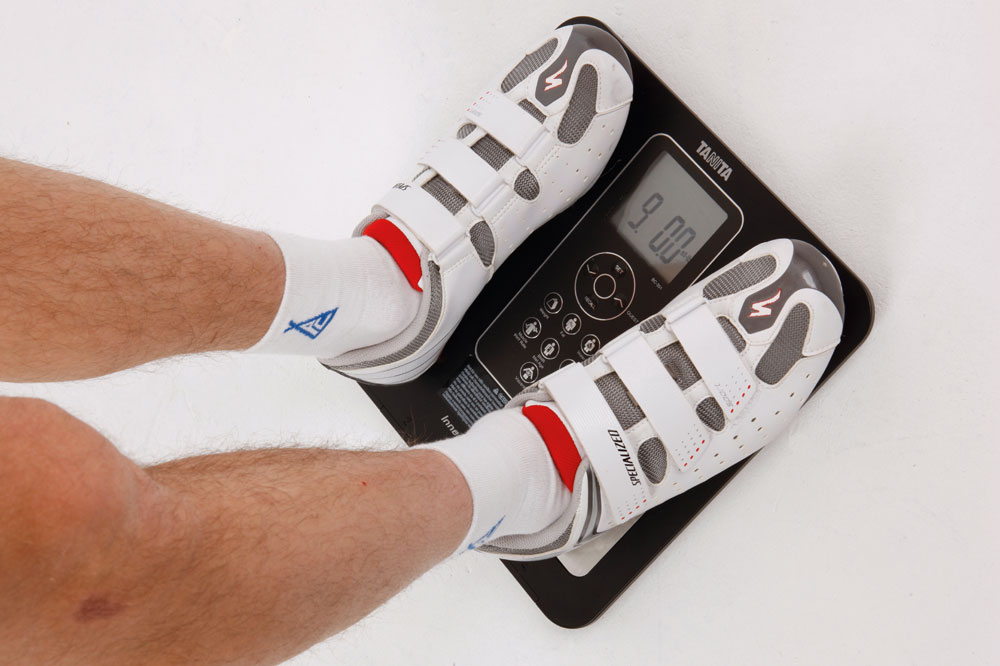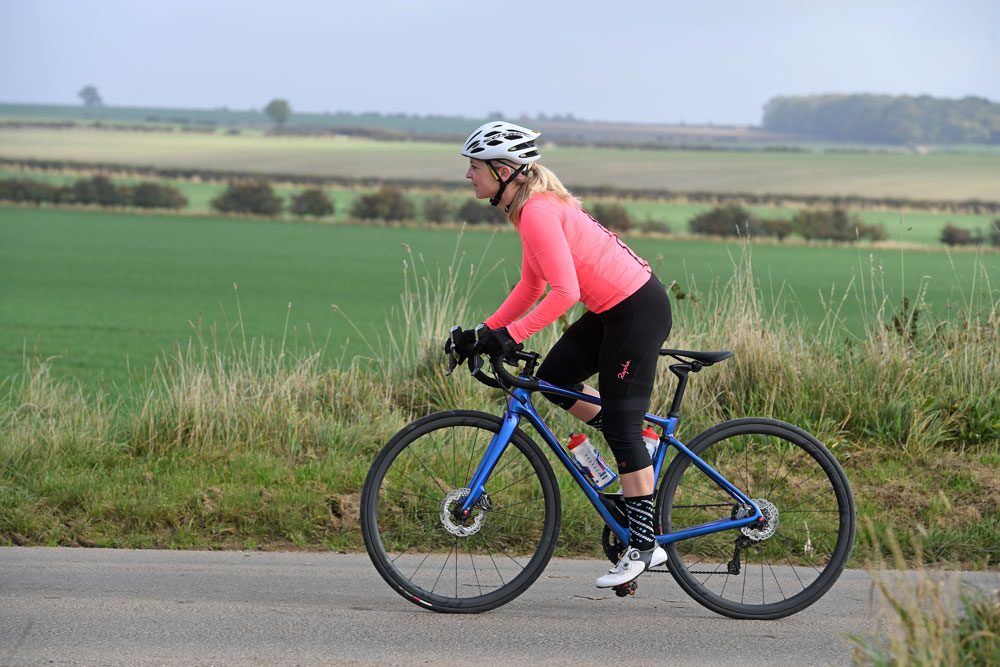What's the perfect BMI for a cyclist?
Body Mass Index, or BMI, is widely used to measure if you are a healthy weight… but does it work for bike riders?

Power to weight is vital for cyclists – but how do you know what numbers to aim for?

Body Mass Index (BMI) is a scale used to measure if you are a healthy weight for your height. Your BMI is found by dividing your weight by your height squared, for example, so if you weigh 60kg and you're 1.65m high then your BMI is:
60 ÷ (1.65 x 1.65) = 22.03.
You can find a BMI calculator here.
A healthy BMI for adult men and women is between 19 and 25; below 19 is considered under-weight and above 25 over weight.
What's a healthy BMI for a cyclist?
The four cyclists below are all in the healthy range – just – but a very powerful, muscular rider like Robert Förstemann is almost in the overweight category, whereas Chris Froome is verging on being underweight. Conor Dunne is very tall and Nairo Quintana short, but both have exactly the same BMI.
| Nairo Quintana | 167 | 59 | 21.2 |
| Chris Froome | 186 | 69 | 19.9 |
| Robert Förstemann | 174 | 90 | 29.7 |
| Conor Dunne | 204 | 88 | 21.1 |
BMI is widely used by health professionals and is a useful tool, but it doesn’t tell the whole story. It was designed by a Belgian statistician in 1832 for examining normal growth rates in a large population, but it was not designed to monitor obesity or health in individuals. As a means of looking at large scale trends it is still very useful but if you happen to be very tall, or very short, or (as is the case with many cyclists) very muscular and very lean, then it can be misleading.
BMI doesn’t take into account what your body weight is made up of, how much of it is lean muscle, and how much is fat. Even more importantly, it doesn’t give you any information on where that body fat is stored. For the full picture you need to find out your lean body mass.
Get The Leadout Newsletter
The latest race content, interviews, features, reviews and expert buying guides, direct to your inbox!
Watch: six weight-loss tips for cyclists
Calculating Lean Body Mass
Lean body mass is the amount of weight that you carry which isn’t fat. This is far more important to a cyclist than BMI. Fat is metabolically inert, it contributes nothing to your cycling performance, and if you are dragging extra weight uphill it is just going to slow you down.
A healthy body fat percentage is 14-17% for men and 21-24% for women, but professional athletes have lean body fat percentages as low as 6-13% for men and 14-20% for women. Anything below those lower limits is damaging to health, as a small amount of fat is essential. Someone like Förstemann, as per our earlier example, is at the upper limit of the healthy range for BMI but has a low body fat percentage – which is a good example of why looking at BMI can be misleading.
>>> Calories burned cycling: Everything you need to know
If you want to improve as a cyclist, but remain healthy, it is your lean body mass you need to know. This can be found at home by using body mass scales such as these from Tanita.
Other methods for finding lean body mass include body fat calipers, which measure the fat in a skin-fold, or the sophisticated method of underwater weighing, which can only be done in a laboratory. For most of us, though, a set of scales will work perfectly for measuring lean body mass.

Thank you for reading 20 articles this month* Join now for unlimited access
Enjoy your first month for just £1 / $1 / €1
*Read 5 free articles per month without a subscription

Join now for unlimited access
Try first month for just £1 / $1 / €1
Hannah Reynolds interest in cycling began while studying for a degree in Sports Science at the University College Chichester and surrounded by elite level cyclists. She is now undertaking a PhD at Sheffield Hallam University investigating the use of e-bikes by older people.
A committed dabbler whose passion outweighed her talent Reynolds has competed across all disciplines of cycling bar BMX. In the very distant past she has been south-east road race champion, southern cyclo-cross champion and finished third in the European 24hr Solo mountain-bike champs in 2011. She was also the Fitness Editor of Cycling Weekly for 15 years.
Hannah Reynolds is author of several cycling books, France-en-Velo a guide to the ultimate 1000 mile cycle route from the Channel to Med; Britain's Best Bike Ride. LEJOG1000; A 1000 mile journey from Land's End to John o' Groats and 1001 Cycling Tips.
-
 'It took everything' - Puck Pieterse outclimbs Demi Vollering to win La Flèche Wallonne
'It took everything' - Puck Pieterse outclimbs Demi Vollering to win La Flèche WallonneDutch 22-year-old shows Classics pedigree with first one-day victory
By Tom Davidson
-
 Tadej Pogačar flies to dominant victory at La Flèche Wallonne
Tadej Pogačar flies to dominant victory at La Flèche WallonneSlovenian takes second win at Belgian classic ahead of Kévin Vauquelin and Tom Pidcock
By Tom Thewlis